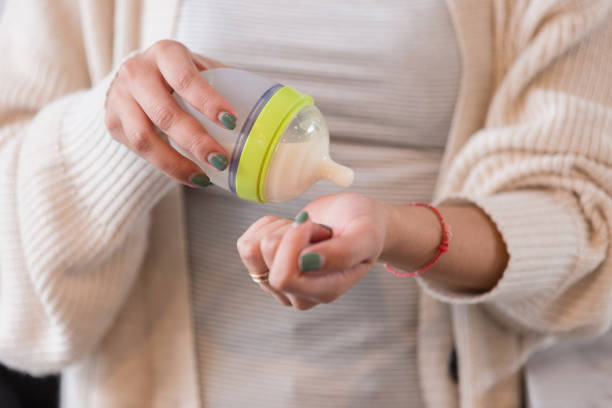Breast milk is widely recognized as the optimal source of nutrition for infants. It provides all the necessary nutrients for a baby’s development and growth, including a wide range of vitamins, minerals, and other essential nutrients. One of the most important aspects of breast milk is its caloric content, which plays a crucial role in supporting an infant’s energy needs. In this article, we will explore the caloric content of breast milk and how it can help support an infant’s growth and development.
First, let’s examine how many calories are in breast milk. According to the Centers for Disease Control and Prevention (CDC), the average caloric content of breast milk is 20 calories per ounce (30 mL). This means that a baby who consumes around 24 ounces (720 mL) of breast milk per day would be getting around 480 calories from breast milk alone. However, it’s important to note that the caloric content of breast milk can vary depending on several factors.
Now, let’s look at the caloric content of breast milk. The caloric content of breast milk can vary slightly depending on various factors, including the age of the infant, the mother’s diet, and the time of day. However, on average, breast milk contains about 20 calories per ounce. This may not seem like a lot, but it is important to remember that an infant’s stomach is much smaller than an adult’s, so they do not need as much food to meet their caloric needs.
One factor that can affect the caloric content of breast milk is the mother’s diet. Breast milk is made up of the nutrients and calories that a mother takes in through her diet, so if a mother is consuming more calories, her breast milk may contain more calories as well. Additionally, if a mother is breastfeeding more than one child, her body may produce more milk to meet the increased demand, and this additional milk may have a higher caloric content.
Another factor that can affect the caloric content of breast milk is the stage of lactation. During the first few days after birth, a mother’s breast milk is called colostrum, which has a higher concentration of proteins and antibodies but a lower caloric content than mature milk. As the baby gets older, the caloric content of the breast milk may increase as the proportion of fat in the milk increases.
In addition to the caloric content of breast milk, it’s also important to consider the infant’s age and size when determining how many calories they need. The CDC recommends that infants consume around 20 calories per pound of body weight per day, with a range of 15-30 calories per pound per day. This means that an infant who weighs around 10 pounds (4.5 kg) would need around 200 calories per day, while an infant who weighs 15 pounds (6.8 kg) would need around 300 calories per day.
As an infant grows and develops, their caloric needs will change. In the first few weeks of life, an infant’s caloric needs are relatively high, as they are growing and developing at a rapid pace. As they get older, their caloric needs will decrease slightly. For example, a newborn infant will typically need about 20 calories per pound of body weight per day, while a 6-month-old infant will need about 16 calories per pound of body weight per day.
It’s worth noting that these recommendations are based on the average caloric needs of infants and may vary depending on the individual needs of the baby. For example, an infant who is experiencing rapid growth or who is more active may require more calories to support their development. Similarly, an infant who is not growing as quickly or who is less active may need fewer calories.
One of the main benefits of breast milk is that it is easy for an infant to digest. This is because it contains enzymes and other substances that help to break down the nutrients in the milk, making it easier for an infant to absorb and utilize. Breast milk is also rich in antibodies and other immune-boosting substances, which can help to protect an infant from illness and infection.
So, to sum up, the number of calories in breast milk can vary depending on the mother’s diet, the stage of lactation, and the infant’s age and size. On average, breast milk contains around 20 calories per ounce, and the CDC recommends that infants consume around 20 calories per pound of body weight per day. It’s important to monitor the caloric intake of infants to ensure that they are receiving the necessary nutrients for their growth and development.
In conclusion, breast milk is a vital source of nutrition for infants, providing all the necessary nutrients and calories needed for their growth and development. The caloric content of breast milk can vary depending on several factors, including the mother’s diet, the stage of lactation, and the infant’s age and size. By paying attention to these factors and ensuring that infants are receiving the right amount of calories, parents can help support their child’s healthy growth and development.

 Home
Home Health
Health Diet & Nutrition
Diet & Nutrition Living Well
Living Well More
More













